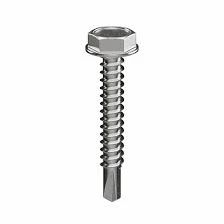The Utility and Advantages of Self-Drilling Bolts in Construction Projects
The Importance and Applications of Self-Drilling Bolts
Self-drilling bolts, also known as self-tapping screws or self-drilling screws, have transformed the landscape of construction and manufacturing. These innovative fasteners are designed to eliminate the need for pre-drilling holes, making the assembly process faster and more efficient. Their unique design typically features a drill bit tip that allows the screw to penetrate materials like metal and wood without prior hole preparation. This characteristic makes self-drilling bolts increasingly popular in various industries.
Advantages of Self-Drilling Bolts
One of the most significant advantages of self-drilling bolts is the time-saving aspect they bring to projects. Traditional fastening methods often require workers to drill holes before inserting bolts, a process that can be labor-intensive and time-consuming. In contrast, self-drilling bolts streamline this operation. By allowing users to skip the pre-drilling step, these bolts reduce labor costs and improve project timelines.
Additionally, self-drilling bolts can offer a stronger connection compared to conventional screws. The design allows for better material penetration, resulting in a more robust hold. This is particularly valuable in applications requiring high strength and integrity, such as steel construction and heavy machinery assembly. The mechanical locking mechanism formed when the bolt embeds itself into the material results in enhanced resistance to vibration and fatigue, making them ideal for various demanding environments.
Another advantage is the versatility of self-drilling bolts. They come in numerous sizes and shapes, enabling their use across a wide range of materials, including metals, plywood, and concrete. The adaptability of these fasteners makes them suitable for use in diverse industries, including automotive, aerospace, furniture manufacturing, and general construction.
Applications in Construction and Industry
Self-drilling bolts have found applications in numerous sectors. One of their primary uses is in the construction of metal buildings, where they facilitate the quick assembly of steel structures. Their ability to penetrate thick steel sheets without pre-drilling speeds up the erection of steel frames, making them integral in modern construction techniques.
self drilling bolts

In the automotive industry, self-drilling screws are employed in the assembly of various components, providing a secure fastening solution that withstands rigorous operational conditions. The vibration resistance of these screws ensures the integrity of vehicle structures, crucial for safety and performance.
Furthermore, self-drilling bolts are also prevalent in HVAC (heating, ventilation, and air conditioning) installations. These screws simplify the process of attaching ductwork, allowing for quicker installations and subsequent maintenance. The ease of use and reliability further enhance their widespread adoption in the industry.
Considerations and Best Practices
While self-drilling bolts offer numerous benefits, certain considerations should be taken into account. It is essential to select the right type of bolt for the specific material and application. Using an inappropriate screw could lead to inadequate fastening or damage to the materials involved.
Proper installation techniques are also critical. Even though self-drilling bolts eliminate pre-drilling, the angle and speed of insertion must be monitored to prevent stripping the screw or the surrounding material. High-quality power tools that can handle the torque of self-drilling applications will ensure optimal performance.
Conclusion
In summary, self-drilling bolts represent a significant advancement in fastening technology, providing a fast, efficient, and robust solution for a variety of applications. Their advantages in construction and manufacturing processes cannot be overstated, as they contribute to shorter project timelines and enhanced structural integrity. As industries continue to evolve, the reliance on innovative fastening solutions like self-drilling bolts will likely grow, underscoring their critical role in modern construction and assembly methodologies.
-
Weatherproof Plastic Expansion Anchors for OutdoorNewsJun.06,2025
-
Sustainability in the Supply Chain: Eco-Friendly TEK Screws ProductionNewsJun.06,2025
-
Load-Bearing Capacity of External Insulation FixingsNewsJun.06,2025
-
Double Head Bolts: Enhancing Efficiency in Industrial MachineryNewsJun.06,2025
-
Corrosion Resistance in Chipboard Screws: Coatings for Wholesale DurabilityNewsJun.06,2025
-
Butterfly Toggle Bolts : Enhancing Structural ResilienceNewsJun.06,2025
